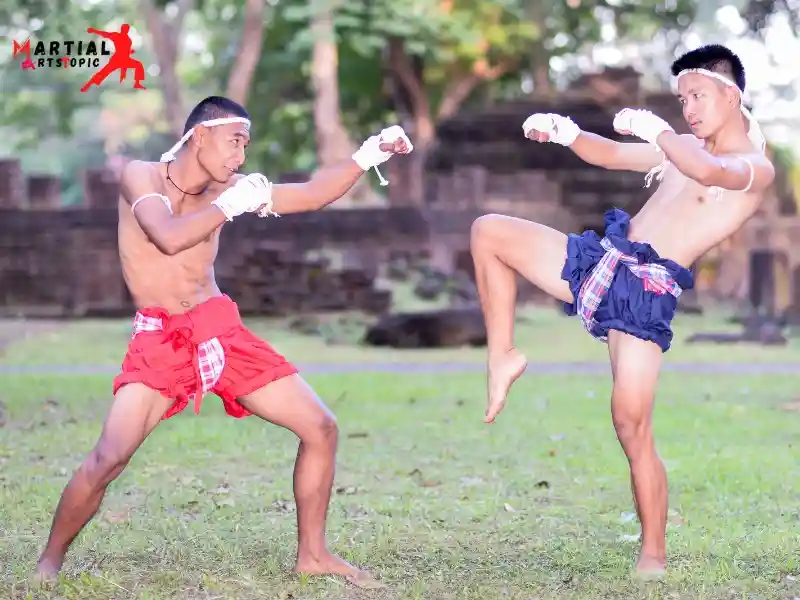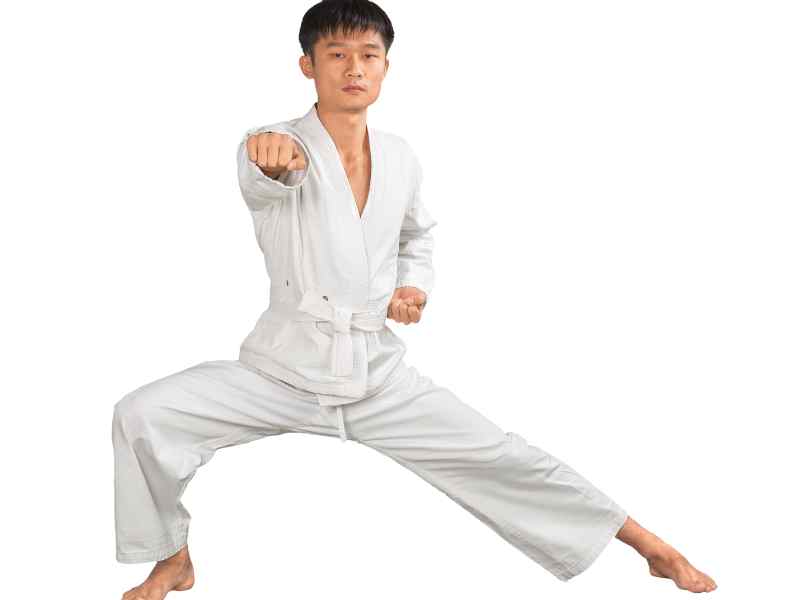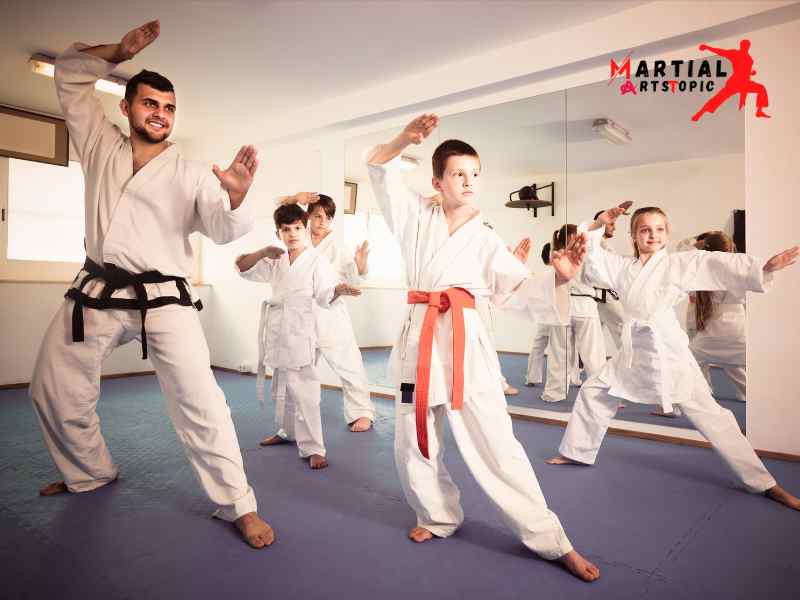
Unveiling the Power: The Art of Jeet Kune Do Fighting Style
Jeet Kune Do, a martial art developed by the legendary Bruce Lee, is known for its effectiveness and efficiency in combat. The philosophy behind Jeet Kune Do emphasizes the idea of using what works and discarding what doesn’t, making it an adaptable fighting style. In this blog post, we will delve into the world of Jeet Kune Do and uncover the power it holds as a martial art form.
Jeet Kune Do Fighting Style: Brief Overview
Jeet Kune Do Fighting Style: Jeet Kune Do, often referred to as JKD, is not just a set of techniques, but a way of thinking and moving. It incorporates elements of various martial arts, including boxing, fencing, and Wing Chun, to create a well-rounded and dynamic fighting style. The core principles of Jeet Kune Do revolve around intercepting and disrupting the opponent’s attacks, as well as using economy of motion and non-telegraphic movements to gain the upper hand in combat.
The Power of Jeet Kune Do: Adaptability and Efficiency

One of the key strengths of Jeet Kune Do is its adaptability. Unlike traditional martial arts that adhere to strict forms and routines, Jeet Kune Do encourages practitioners to be fluid and spontaneous in their movements. This allows individuals to tailor their fighting style to their own unique attributes and preferences, making Jeet Kune Do a highly personalized and effective form of self-defense.
Additionally, Jeet Kune Do emphasizes the importance of efficiency in combat. Practitioners are trained to execute techniques that are direct, economical, and powerful, with the goal of incapacitating the opponent as quickly as possible. By focusing on practicality and effectiveness, Jeet Kune Do empowers individuals to defend themselves effectively in real-life situations.
The Philosophy of Jeet Kune Do: Simplicity and Directness
At the heart of Jeet Kune Do lies a philosophy that values simplicity and directness. Bruce Lee famously said, “I do not believe in styles anymore,” highlighting the idea that rigid adherence to fixed patterns can limit one’s potential in combat. Instead, Jeet Kune Do encourages individuals to embrace the fluidity of movement and to adapt to ever-changing circumstances, both in martial arts and in life.
The Origins of Jeet Kune Do
The Origins of Jeet Kune Do: Bruce Lee’s Revolutionary Fighting Style Jeet Kune Do, often referred to as JKD, is a martial art that has captured the fascination of practitioners and enthusiasts around the world. Developed by the legendary Bruce Lee, this fighting style has a rich historical background and a unique set of influences that have shaped its evolution.
The Origins of Jeet Kune Do
Jeet Kune Do traces its origins to the innovative mind of Bruce Lee, whose vision was to create a martial art that was dynamic, practical, and free from the limitations of traditional styles. Born out of Lee’s personal philosophy and experiences, JKD embodies his belief in the importance of adaptability and effectiveness in combat.
Historical Background of JKD
Bruce Lee’s journey in developing Jeet Kune Do began with his early training in Wing Chun, a traditional Chinese martial art. However, Lee’s quest for a more comprehensive and adaptable fighting style led him to explore a diverse range of influences, including boxing, fencing, and various philosophical concepts.
Influences that Shaped JKD
- Wing Chun: As a foundational influence on JKD, Wing Chun provided Lee with essential principles of close-range combat, efficiency of movement, and directness in striking, all of which are evident in the techniques of Jeet Kune Do.
- Boxing: Lee’s study of Western boxing contributed to the development of JKD’s emphasis on fluid footwork, head movement, and powerful punches, integrating the best elements of Western and Eastern martial arts.
- Fencing: The principles of distance management, timing, and the use of angles from fencing influenced Lee’s approach to combat, leading to the incorporation of evasive footwork and strategic positioning in Jeet Kune Do.
- Philosophy: Beyond physical techniques, Bruce Lee’s philosophical influences, including Taoism and Zen Buddhism, guided the conceptual framework of Jeet Kune Do, emphasizing personal growth, self-expression, and the cultivation of a fluid and adaptable mindset.
The Legacy of Jeet Kune Do
Bruce Lee’s groundbreaking work in developing Jeet Kune Do has left a lasting impact on the martial arts world. His philosophy and innovative approach to combat continue to inspire practitioners to embrace the principles of adaptability, efficiency, and personal expression in their martial arts journey.
Principles of Jeet Kune Do

Unlocking the Power of Jeet Kune Do Fighting Style: Exploring its Core Principles and Philosophy Jeet Kune Do, the martial art founded by the legendary Bruce Lee, is more than just a fighting style. It’s a philosophy, a way of life, and a path to self-discovery. At the heart of Jeet Kune Do (JKD) are its core principles, which guide practitioners to become more efficient, effective, and adaptable in combat and in life. In this blog post, we will delve into the essential principles of Jeet Kune Do, including interception, simplicity, and directness, and explore the profound philosophical concepts of “using no way as way” and “having no limitation as limitation.”
Interception: The Key to Jeet Kune Do’s Effectiveness
One of the fundamental principles of Jeet Kune Do is interception. In JKD, practitioners are trained to intercept their opponent’s attacks before they can fully develop, thus disrupting their opponent’s momentum and gaining the upper hand in combat. This concept emphasizes the importance of timing, awareness, and efficient use of energy. By intercepting an opponent’s attacks, JKD practitioners are able to neutralize threats and create openings for their own counterattacks, making interception a cornerstone of JKD’s effectiveness in combat.
Simplicity: Stripping Away the Unnecessary
Simplicity is another core principle of Jeet Kune Do. Bruce Lee famously emphasized the importance of simplicity in combat, advocating for the removal of unnecessary movements and techniques. In JKD, practitioners are encouraged to streamline their movements, focusing on what is essential and discarding the rest. This emphasis on simplicity allows practitioners to react quickly and decisively in a dynamic combat situation, maximizing their effectiveness while minimizing wasted effort.
Directness: The Path to Efficient Action
Directness is a guiding principle in Jeet Kune Do, emphasizing the most efficient and effective way to achieve a desired outcome. JKD encourages practitioners to take direct, straightforward approaches to combat, avoiding overly complex or convoluted techniques. By prioritizing directness, practitioners can act decisively and with maximum force, minimizing the potential for error and increasing the likelihood of success in combat.
Fundamentals of Jeet Kune Do Techniques
The Fundamentals of Jeet Kune Do Techniques. Are you looking to delve into the world of martial arts and master the fundamentals of Jeet Kune Do techniques? Known for its fluid and adaptive fighting style, Jeet Kune Do, popularized by the legendary Bruce Lee, is a martial art that emphasizes efficiency, directness, and simplicity. In this comprehensive guide, we will explore the essential components of Jeet Kune Do techniques, including footwork and stance, striking techniques, trapping and grappling techniques, as well as defense and counter-attacking principles.
Footwork and Stance
The foundation of Jeet Kune Do techniques lies in the mastery of footwork and stance. By maintaining a balanced and mobile stance, practitioners can effectively move, evade, and strike with precision. The dynamic footwork in Jeet Kune Do allows for swift transitions between offensive and defensive maneuvers, enabling practitioners to adapt to any combat scenario seamlessly.
Striking Techniques
- Straight Lead Punch: A hallmark of Jeet Kune Do, the straight lead punch is a powerful and direct attack that capitalizes on speed and accuracy. Executed with the lead hand, this technique is designed to disrupt the opponent’s guard and create openings for follow-up strikes.
- Side Kick: Known for its versatility and impact, the side kick in Jeet Kune Do is a potent weapon for both close-range and long-range engagements. Whether used for targeting the lower body or creating distance from the opponent, the side kick exemplifies the efficiency and practicality of the Jeet Kune Do fighting style.
- Intercepting Fist: Emphasizing interception and preemptive striking, the intercepting fist technique enables practitioners to disrupt the opponent’s attacks while maintaining a proactive stance. By intercepting incoming strikes with swift and accurate counter-attacks, Jeet Kune Do practitioners can effectively control the rhythm of the fight.
Trapping and Grappling Techniques
Incorporating elements of Wing Chun and Western boxing, Jeet Kune Do encompasses a range of trapping and grappling techniques that enable practitioners to neutralize the opponent’s defenses and gain a positional advantage. From controlling the opponent’s limbs to executing seamless transitions between striking and grappling, these techniques highlight the adaptability and fluidity of Jeet Kune Do in close-quarters combat.
Defense and Counter-Attacking Principles
Central to the philosophy of Jeet Kune Do is the concept of intercepting and countering the opponent’s attacks with efficient and decisive responses. By integrating evasive footwork, defensive parries, and precise counter-strikes, practitioners of Jeet Kune Do can effectively defend themselves while capitalizing on openings to launch calculated counter-attacks.
Training Methods for Jeet Kune Do

Unlocking the Power of Jeet Kune Do: Essential Training Methods for this Dynamic Fighting Style Jeet Kune Do, the martial art created by the legendary Bruce Lee, is renowned for its dynamic and practical approach to combat. To master this fighting style, practitioners must engage in a comprehensive training regimen that encompasses a variety of methods. In this blog post, we’ll explore the essential training methods for Jeet Kune Do, including solo training drills, partner drills, sparring and application of techniques, as well as physical conditioning and flexibility exercises.
Solo Training Drills
Solo training drills are an integral part of mastering Jeet Kune Do. These drills allow practitioners to develop fundamental skills such as footwork, striking techniques, and defensive maneuvers. Shadow boxing, heavy bag work, and speed drills are all examples of solo training drills that help practitioners hone their coordination and precision in executing Jeet Kune Do techniques. By incorporating these drills into their training regimen, practitioners can improve their overall proficiency in this dynamic fighting style.
Partner Drills
Partner drills play a crucial role in Jeet Kune Do training, as they allow practitioners to apply their techniques in a dynamic and interactive setting. Practitioners can engage in drills such as trapping hands, sensitivity drills, and sparring drills with a training partner to develop their timing, distance management, and adaptability in combat situations. Partner drills also provide an opportunity for practitioners to test and refine their techniques against a resisting opponent, making them an essential component of Jeet Kune Do training.
Sparring and Application of Techniques
Sparring is where the techniques learned in solo and partner drills are put to the test in a live, dynamic setting. Through controlled sparring sessions, practitioners can refine their timing, accuracy, and strategic thinking in applying Jeet Kune Do techniques. Additionally, sparring allows practitioners to develop their ability to read and adapt to their opponent’s movements, a crucial skill in Jeet Kune Do fighting style.
Physical Conditioning and Flexibility Exercises
Physical conditioning and flexibility exercises are vital for enhancing overall performance in Jeet Kune Do. Strength training, cardiovascular conditioning, and flexibility exercises help practitioners develop the physical attributes necessary for executing Jeet Kune Do techniques with power, speed, and agility. By incorporating these exercises into their training routine, practitioners can improve their endurance, strength, and overall physical resilience, enabling them to perform at their best in the practice and application of Jeet Kune Do techniques.
Adapting Jeet Kune Do for Self-Defense
Adapting Jeet Kune Do for Self-Defense: Applying the Fighting Style in Real-Life Situations Jeet Kune Do, a martial art and philosophy developed by Bruce Lee, has gained popularity for its practical approach to self-defense. The fighting style emphasizes efficiency, directness, and simplicity, making it a valuable tool for real-life self-defense situations. In this blog, we will explore how Jeet Kune Do principles can be applied in self-defense scenarios and how it can be used to defend against common attacks.
Applying Jeet Kune Do Principles in Real-Life Situations
Jeet Kune Do, often referred to as JKD, is known for its adaptability and practicality. Its core principles focus on intercepting an opponent’s attack, using minimal movement for maximum effect, and being fluid and flexible in combat. These principles can be effectively applied in real-life self-defense situations, where quick thinking and efficient techniques are crucial.
When faced with an aggressive situation, individuals trained in Jeet Kune Do can use the fighting style principles to assess the threat and respond with controlled and precise movements. By staying relaxed and focused, practitioners can quickly adapt to the unfolding situation, using their body’s natural weapons and leveraging the opponent’s energy against them.
Defending Against Common Attacks Using Jeet Kune Do Techniques

One of the key aspects of Jeet Kune Do is its emphasis on practical techniques that are effective in real combat. In self-defense, JKD offers a wide range of techniques that can be used to defend against common attacks. Whether it’s a punch, kick, grab, or chokehold, practitioners of Jeet Kune Do are trained to respond with efficient and direct counterattacks.
For example, when facing a punch, a Jeet Kune Do practitioner may use techniques such as trapping and striking simultaneously, redirecting the opponent’s attack, and following up with a decisive counterstrike. Similarly, when dealing with a grab or chokehold, JKD techniques focus on disrupting the opponent’s balance and control while delivering effective strikes to vulnerable areas.
Applying Jeet Kune Do in Practice
Applying Jeet Kune Do in Practice: The Adaptability of the Jeet Kune Do Fighting Style Jeet Kune Do, often referred to as JKD, is a unique and effective fighting style popularized by the legendary martial artist Bruce Lee. This dynamic and fluid martial art emphasizes practicality, flexibility, and adaptability, making it a popular choice for self-defense practitioners and martial artists alike. In this blog post, we will explore the application of JKD principles and techniques in real-life self-defense situations, as well as discuss the adaptability of JKD and its ability to be personalized to individual strengths and preferences.
Real-Life Application of JKD Principles and Techniques
One of the key aspects of Jeet Kune Do is its emphasis on efficiency and directness in combat. JKD practitioners are trained to be quick, agile, and to use techniques that are simple, direct, and effective. In real-life self-defense situations, this approach can be invaluable. For example, the concept of intercepting an opponent’s attack and simultaneously delivering a counterattack, known as “economy of motion,” is a fundamental principle of JKD. This allows practitioners to neutralize threats quickly and decisively, making it an ideal approach in unpredictable street confrontations.
Additionally, JKD’s emphasis on footwork and mobility enables practitioners to move strategically and maintain a strong position in a self-defense scenario. By utilizing angles and positioning, JKD practitioners can effectively control the distance and dictate the flow of the confrontation, giving them a significant advantage over their opponents.
Adaptability and Personalization of JKD
One of the most compelling aspects of Jeet Kune Do is its adaptability and its emphasis on personalized expression. Bruce Lee himself famously said, “Absorb what is useful, reject what is useless, add what is specifically your own.” This philosophy highlights the importance of tailoring JKD techniques to suit an individual’s unique strengths and preferences.
Unlike traditional martial arts, JKD does not adhere to rigid forms or patterns, allowing practitioners to explore and integrate techniques from various disciplines. This flexibility enables individuals to develop a fighting style that aligns with their natural attributes and inclinations, making JKD a highly adaptable and personalized martial art.
Furthermore, JKD’s emphasis on “the style of no style” encourages practitioners to continuously evolve and refine their skills, fostering a dynamic and progressive approach to self-defense and combat. This openness to innovation and experimentation allows JKD practitioners to continually adapt and improve their techniques based on real-world feedback and experiences.
Conclusion
Jeet Kune Do is a dynamic and adaptable fighting style that emphasizes simplicity, directness, and non-classical movement. Developed by Bruce Lee, Jeet Kune Do encourages practitioners to be open-minded and to continuously evolve their techniques based on personal expression and individual abilities. This philosophy of constant improvement and freedom of expression makes Jeet Kune Do a unique and effective martial art for self-defense and personal development.
